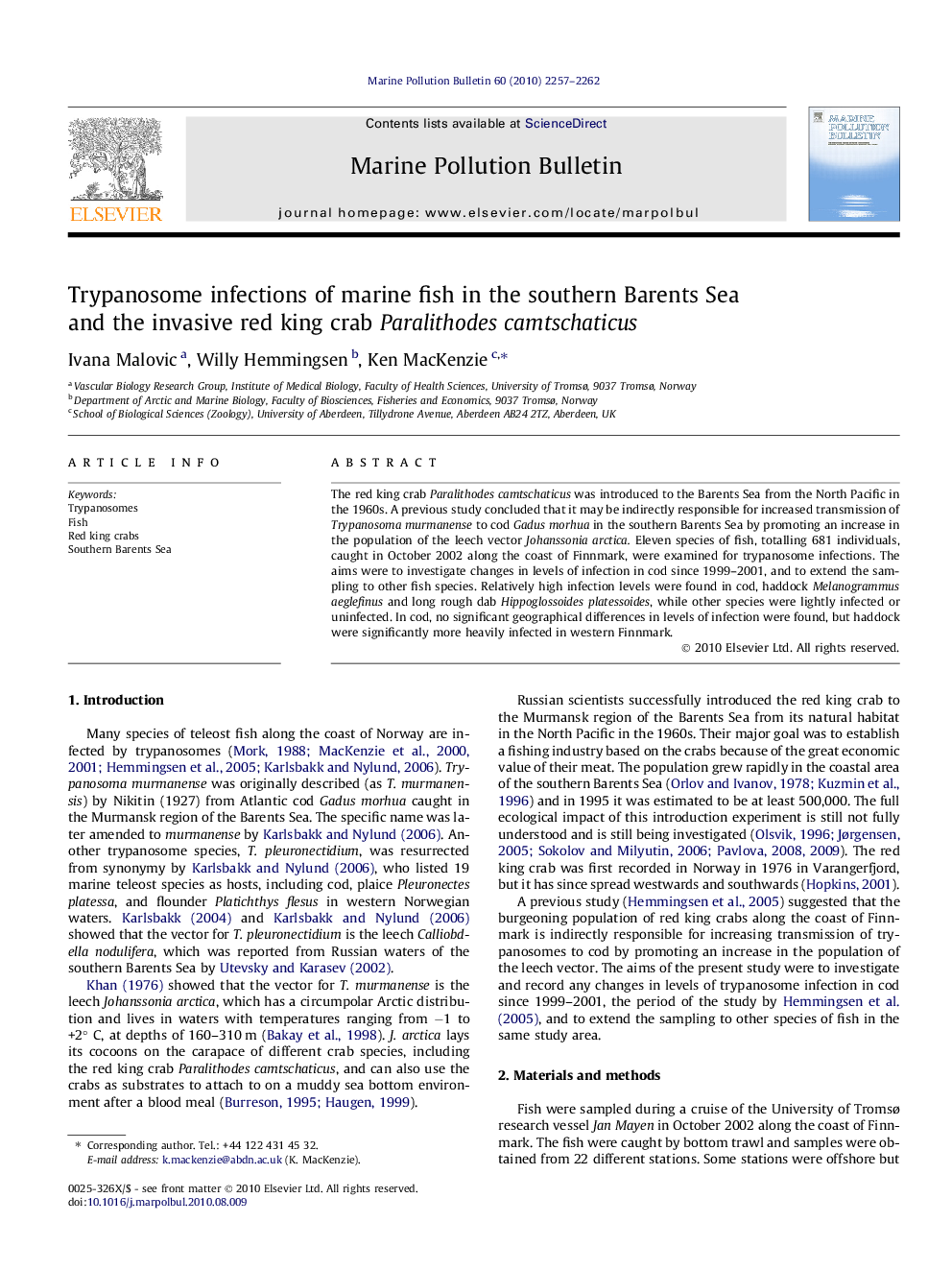| Article ID | Journal | Published Year | Pages | File Type |
|---|---|---|---|---|
| 6361768 | Marine Pollution Bulletin | 2010 | 6 Pages |
The red king crab Paralithodes camtschaticus was introduced to the Barents Sea from the North Pacific in the 1960s. A previous study concluded that it may be indirectly responsible for increased transmission of Trypanosoma murmanense to cod Gadus morhua in the southern Barents Sea by promoting an increase in the population of the leech vector Johanssonia arctica. Eleven species of fish, totalling 681 individuals, caught in October 2002 along the coast of Finnmark, were examined for trypanosome infections. The aims were to investigate changes in levels of infection in cod since 1999-2001, and to extend the sampling to other fish species. Relatively high infection levels were found in cod, haddock Melanogrammus aeglefinus and long rough dab Hippoglossoides platessoides, while other species were lightly infected or uninfected. In cod, no significant geographical differences in levels of infection were found, but haddock were significantly more heavily infected in western Finnmark.
Research highlights⺠Eleven species of fish examined for trypanosome infections. ⺠Relatively high infection levels found in cod, haddock and long rough dab. ⺠No significant geographical differences in levels of infection in cod. ⺠Introduced red king crabs may be indirectly responsible for increased transmission of T. murmanense to cod.
